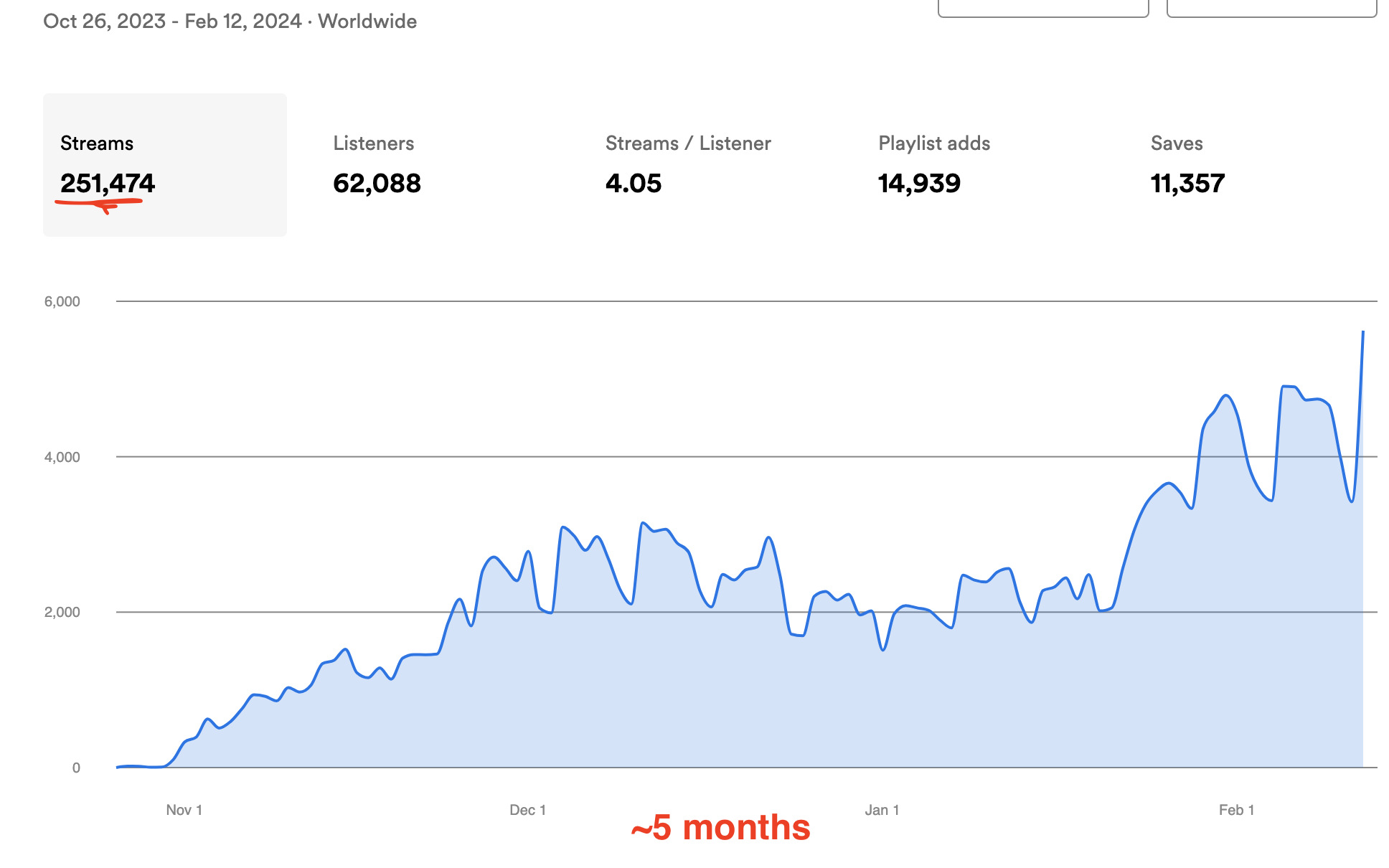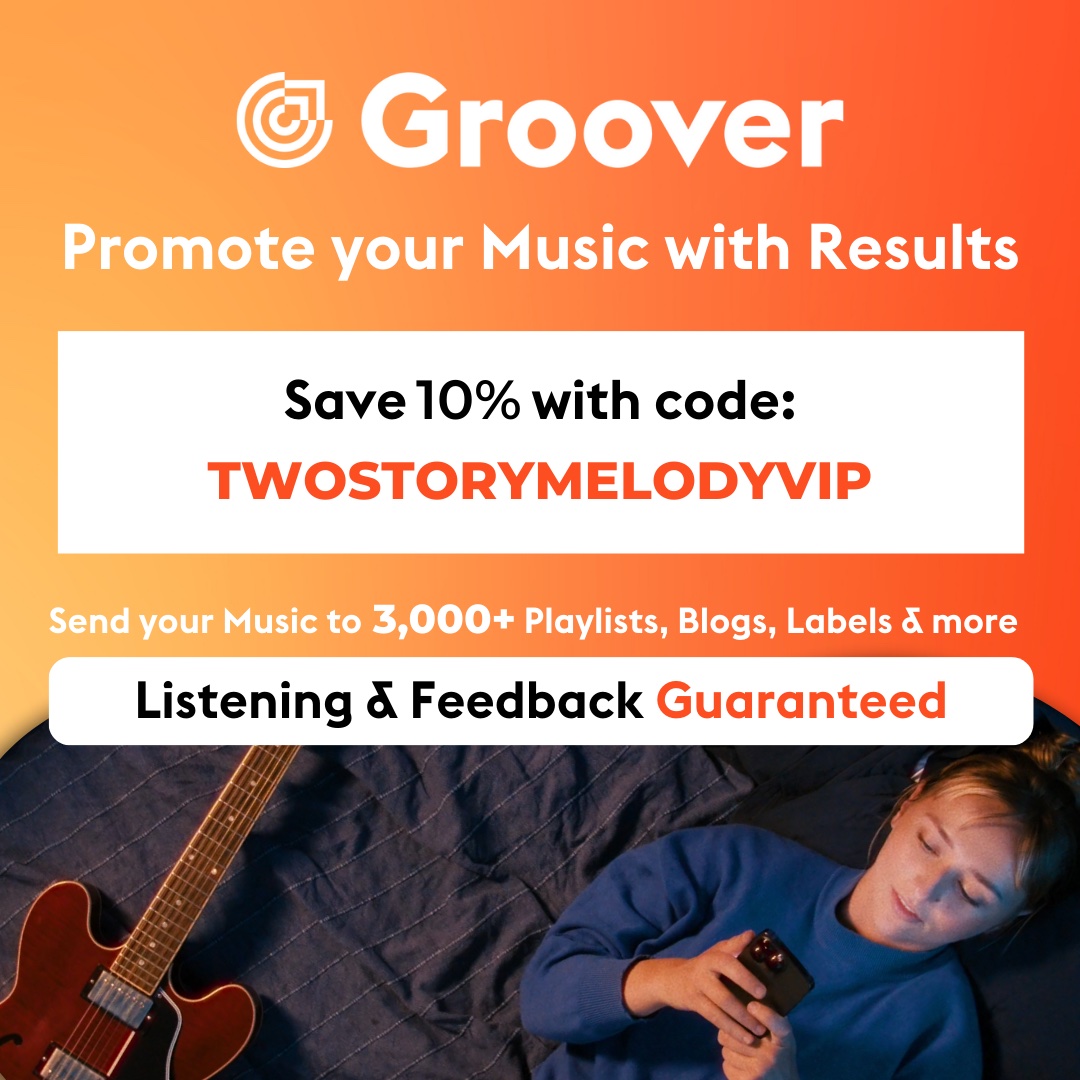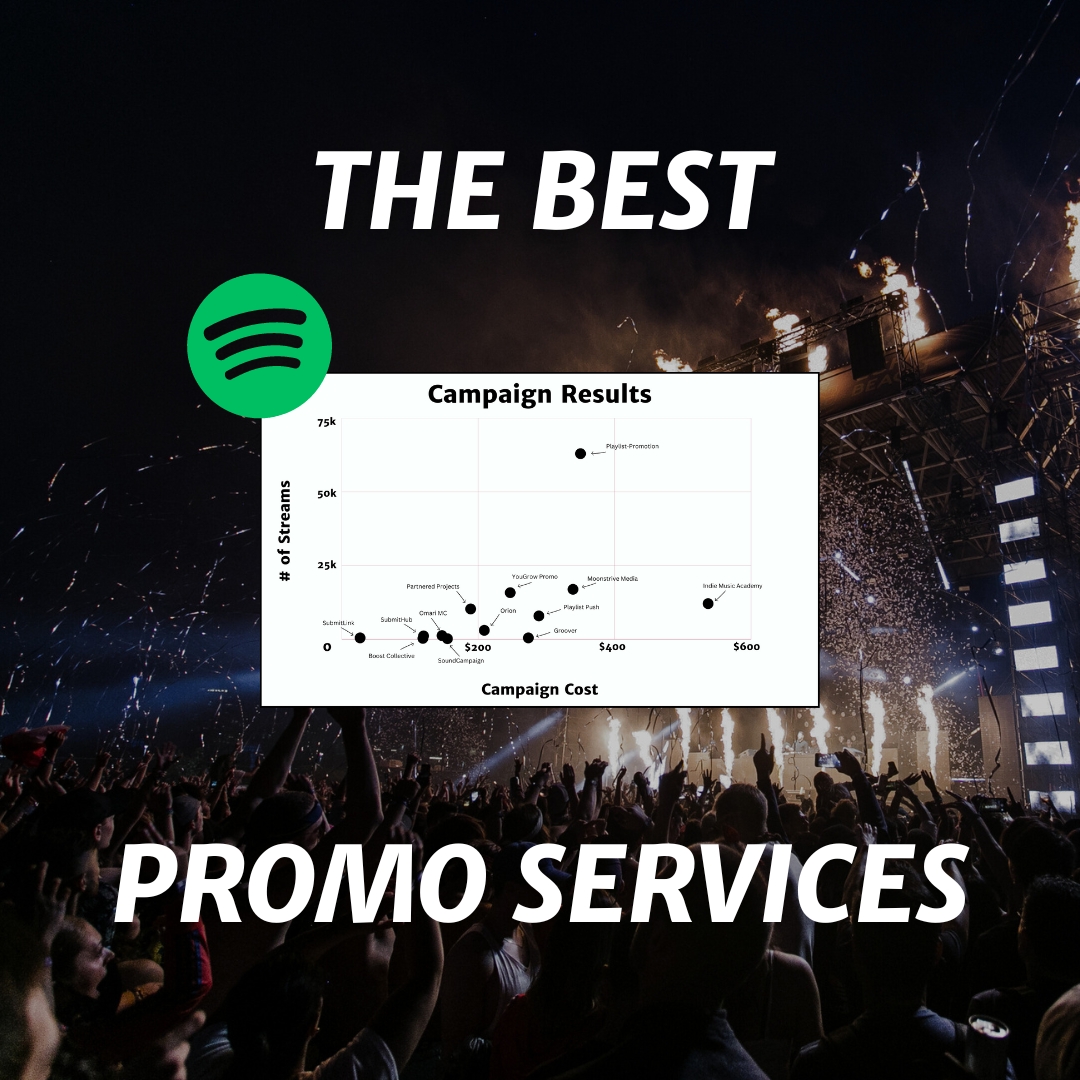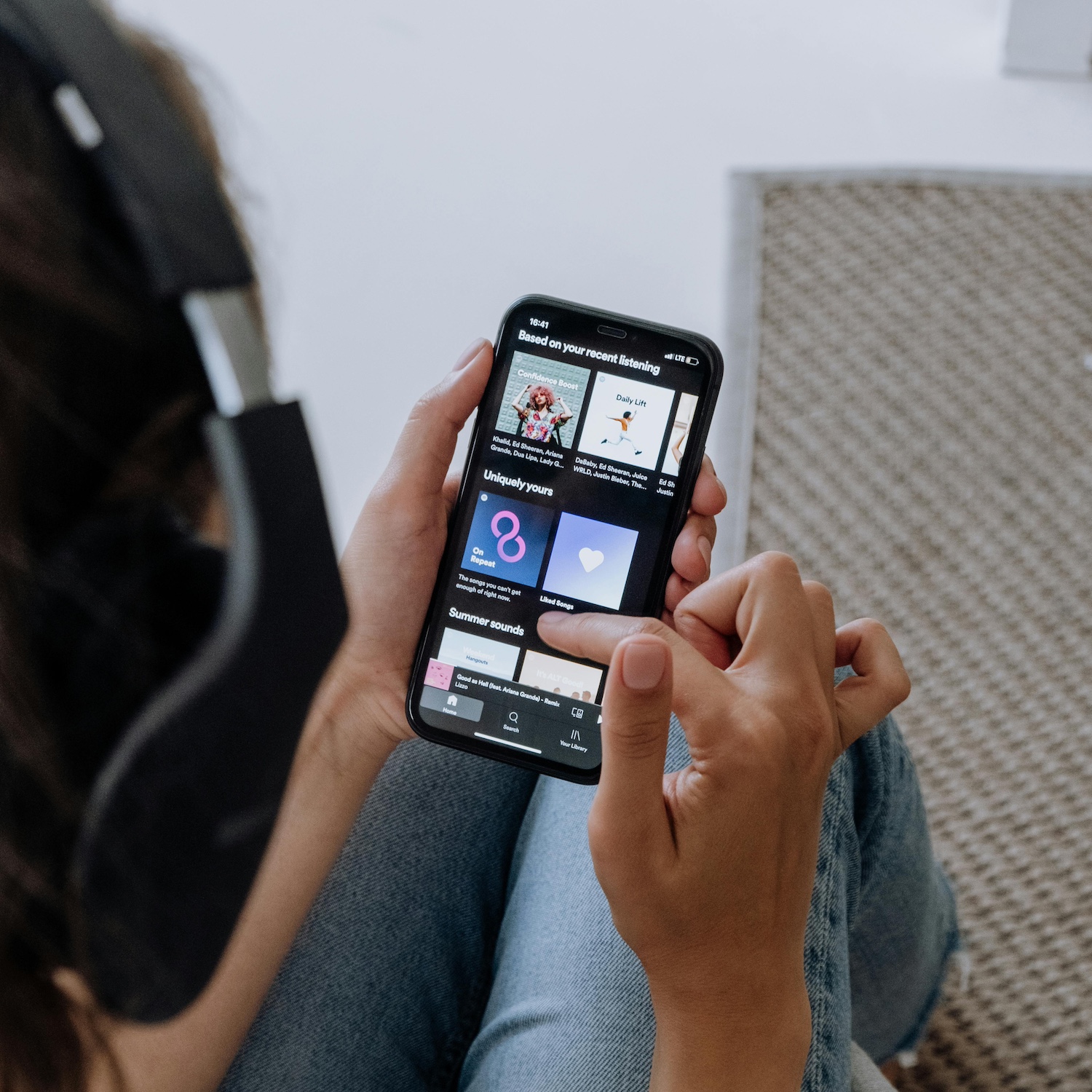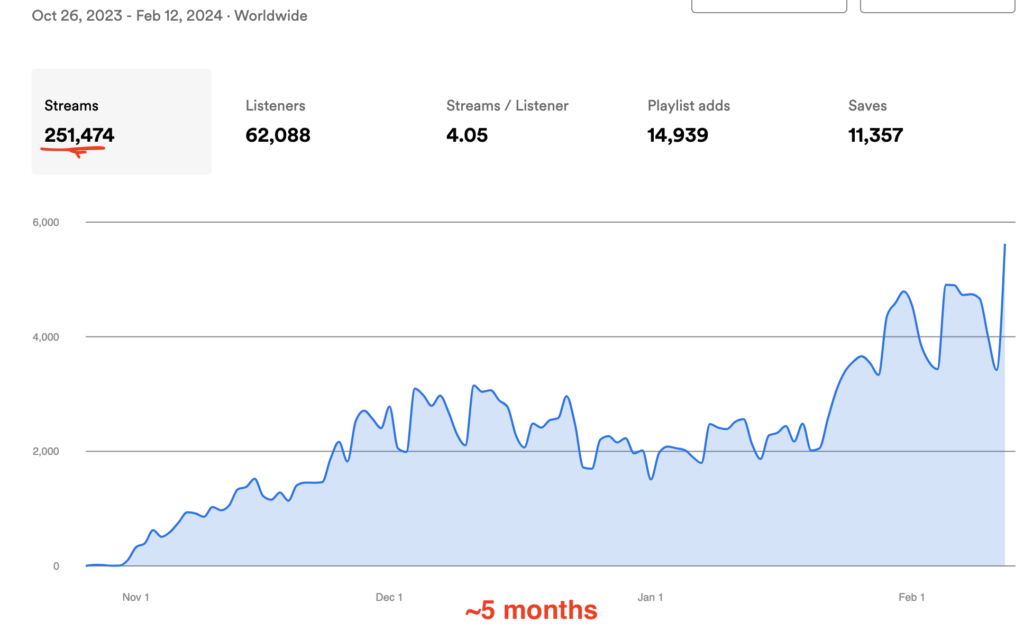Music publishing is the monetization of musical compositions.
“But that sentence is just a jumble of jargon,” you say, shaking your head in disappointment. “I don’t actually know what that means.”
Yeah. I agree.
I’ve run Two Story Media (a music PR firm) and Two Story Melody (the music blog you’re currently reading) for about six years, and I’m somewhat ashamed to admit that, until last year, I had no clue what music publishing actually entailed.
I mean, I read the first sentence of the first Google result for “music publishing,” so I knew enough to sound like I got it. But I never took the time to actually dig into the topic. I knew its branches, but I didn’t have the root knowledge. And as it turns out, a) the topic is pretty complex, so there’s a lot of root knowledge to know, and b) it’s probably worth knowing if you’re going to be a serious participant in the music business.
So last year, I finally took the the time to learn about it – and this year, I’m going to break it down for you, too. That way, you and I will both know what the heck we’re actually talking about.
Here’s the root knowledge you need to understand music publishing:
- The two types of musical copyrights
- The types of royalties you can collect for compositions
- How PROs factor into all of this
- Examples of music publishers
I think if we cover all of that, you’ll have a better idea of what music publishing actually is (and the textbook definition up at the top of the page will start to make more sense).
Ready? Great. Let’s dive in.
The two types of musical copyrights
First up: If you want to understand music publishing, you need to understand the two basic types of copyrights for music: song recording rights and composition rights.
1. Song recording rights
These are somewhat self-explanatory: They’re copyrights associated with a specific recording of a song (also known as a “master”).
Put simply, if you record a song, that specific version of the song has rights. If a company wanted to use the recording in a commercial, they would have to pay to do so. (This gets complicated quickly.)
But guess what – music publishers don’t typically administrate song recording rights. Weird, right? But it’s a fact. As Ditto puts it, “Music Publishing deals exclusively with the royalties generated by a song’s Composition.”
So, when we talk about music publishing, we’re talking about the administration of…
2. Composition rights
This is the second type of copyright, and it’s a little bit more abstract: Composition rights are associated with the underlying melodies, harmonies, and lyrics of a song.
(If you’re into entry-level philosophy – I like to think of these as the platonic ideal of the song. If you’re not into entry-level philosophy – sorry.)
Composition rights aren’t associated with any specific recording, but they might be represented in lyrics or sheet music. And, importantly for our purposes, these are the rights that music publishers administrate.
Okay – hopefully, you now understand the “musical compositions” phrase from our definition of music publishing at the top of this article. With that clarified, let’s get into the monetization part of music publishing: royalty collection.
Buckle up.
The types of royalties you can collect for compositions
(Bad news: If you thought distinguishing between song recording rights versus composition rights was kinda complicated, you’re going to want to read this next section very slowly. Good news: If that’s you, you’re in good company with just about every other artist on the planet.)
Okay, before we dive into what kinds of royalties you can collect when you hold composition rights, I want to clarify what “royalties” are. Let’s turn to Icon Collective for a quick definition:
“Music royalties are payments that go to recording artists, songwriters, composers, publishers, and other copyright holders for the right to use their intellectual property (read: songs).”
In other words, royalties are the payments you can get when other people play a song you own.
With that said, there are three main types of royalties (payments) that artists commonly collect for their compositions. (There are three other types, too, but these are the most common.)
1. Mechanical royalties
Mechanical royalties are paid by third-parties that want to distribute a musical composition. That used to primarily apply companies that produced vinyls or CDs of artists songs (hence the term “mechanical”). Mechanical royalties can still be collected in cases where physical copies are being distributed. Same goes for cases where digital copies of songs are bought – like on Apple Music or Amazon.
But, today, mechanical royalties are primarily driven through streaming.
There is very complicated math behind this (for more on how mechanical royalty rates are set, check out this awesome Soundcharts piece), but the basic premise is this: You get paid mechanical royalties by streaming platforms like Spotify when people stream your music.
2. Performance royalties
Performance royalties are due when your song is played in a public setting. This includes streaming (yes, again), radio broadcasts, TV broadcasts, live performances in clubs or theaters, and even street busking.
Obviously, there is a ton of music played around the world every day. So, you may be wondering, who is it that tracks all of these public performances?
God.
And also the performance rights organizations (PROs). These organizations collect royalties for as many public performances of songs as they can. More on that in a bit. But the general concept is that, the bigger an audience for a song’s performance, the more royalties the rights holders are due.
3. Sync licensing fees
Sync licensing fees refer to payments made when songs are licensed to new works of content. As CDBaby writes, “The ‘sync’ part [of the term] comes from the synchronization of music to the moving images.” Let’s say, for example, that Mazda wants to have your song play during a car commercial. They’d negotiate a price and then pay to use the track.
But that’s the stereotypical example. There are actually a few different types of sync placements.
- Social media usage (like on Tik Tok) is typically referred to as micro-sync. Most distributors (i.e., DistroKid, CDBaby) now have this built in.
- You can also send songs to sync libraries like Artlist or Storyblocks Audio, where video creators can browse from a bunch of tracks to pick songs for their projects; if someone uses your song, you get a pre-negotiated fee.
- And you can also work with sync agents to pitch your songs directly to music supervisors (the people at film studios responsible for selecting and licensing music). This is the path to getting your song playing on your favorite Netflix show.
It’s also worth noting that, when your song is placed via sync licensing, you will also get performance royalties when the song is played. (This is kind of confusing but ultimately good for you.)
How PROs factor into music publishing
All right – we’ve outlined what composition rights are and what kind of royalties are due from them. Now, let’s clarify a common point of confusion: the role of PROs in all of this. (We’ve already touched on this, but I want to spell it out, because I kept mixing up PROs and publishers in my head for a while.)
PROs are performance rights organizations. Their primary role is to collect and distribute performance rights royalties (explained above) to rights holders.
As the inerrant and incomparable Wikipedia puts it, a PRO “provides intermediary functions, particularly collection of royalties, between copyright holders and parties who wish to use copyrighted works publicly in locations such as shopping and dining venues.”
In the US, the major PROs are ASCAP, BMI, and SESAC. (Different countries have different PROs – if you’re not in the US, it’s worth Googling to find yours.) These organizations are comparable and competitive with each other, but choices aside, if you’re looking to collect performance royalties, you should definitely get onboard with one of them.
And, finally, I just want to reiterate: PROs are not music publishers. They only handle one royalty type (performance royalties) and they only handle it in one territory / country. Typically, a music publisher works directly with a musician to administrate performance royalties from around the world, plus mechanical royalties and potential sync placements, as well.
Here’s how TuneCore explains this:
Let’s say you’re locally affiliated with BMI and have a song with radio airplay in 15 territories worldwide: if you didn’t use TuneCore’s publishing service, then you’d to wait for 15 different societies to collect your performance royalties, find out who you are and who your local PRO is and then pass that income to BMI. Both the overseas PROs and BMI will take a cut of those royalties…
Without a publishing administrator it can take anywhere from 18 months to multiple years, depending on the territory, for these royalties to find their way to you if at all! Furthermore, without a publishing administrator, US writers specifically are missing out on up to 51% of their publishing income as, without publishing administration, you cannot collect US mechanical royalties.
The job summarized in those two paragraphs is one of the biggest components of music publishing. The second big component of publishing: actively pitching songs for placement (in live performances, commercials, etc.).
Examples of music publishers
At this point, my hope is that we can revisit our definition of music publishing without it sounding like so much jargon. One more time:
Music publishing is the monetization of musical compositions.
It involves the promotion of songs and the global collection of the mechanical royalties, performance royalties, and sync fees that are due to composition rights holders.
The next logical question is: Who / what organizations are the best music publishers for my music?
Honestly, I don’t have the experience to answer that at this point. I can tell you that a lot of artists I work with use services like:
- CDBaby Pro Publishing
- Music Gateway
- Tunecore Publishing
- Songtrust (we reviewed them in more detail here)
Those are some the big indie-focused players. But, truth be told, while these organizations will certainly help you collect all of your royalties, most of them probably aren’t going to be very active in promoting your music. If you want that, you probably need to work with a boutique agency / agent, or get big enough to garner interest from one of the big companies like Kobalt, Sony, or Concord.
Last thoughts on music publishing
Hey, if you made it this far – congratulations. I hope that you now have a better idea of what music publishing is (at least, a better idea than what’s offered in the first sentence of the first Google result).
Finally, I want to offer a few words of encouragement if you’re still a little confused:
1. You have every right to be. Music publishing is objectively confusing, and the deeper you dig, the more complex it gets.
2. While it’s important to have a foundational understanding of music publishing, it actually doesn’t matter that much until your music has some traction.
I’ve seen a lot of artists get caught up in the ins and outs of music publishing before they even have songs to collect royalties from. Here’s the truth: Music publishing really only matters if you’re getting hundreds of thousands of streams of your music.
Yes, music publishing is important. Yes, it can unlock additional revenue (and in the case of sync licensing, that can end up being pretty lucrative pretty fast). But the bottom line is that, if you’re not getting traction with your music, you should focus on that first.
Now get out there – and good luck.


